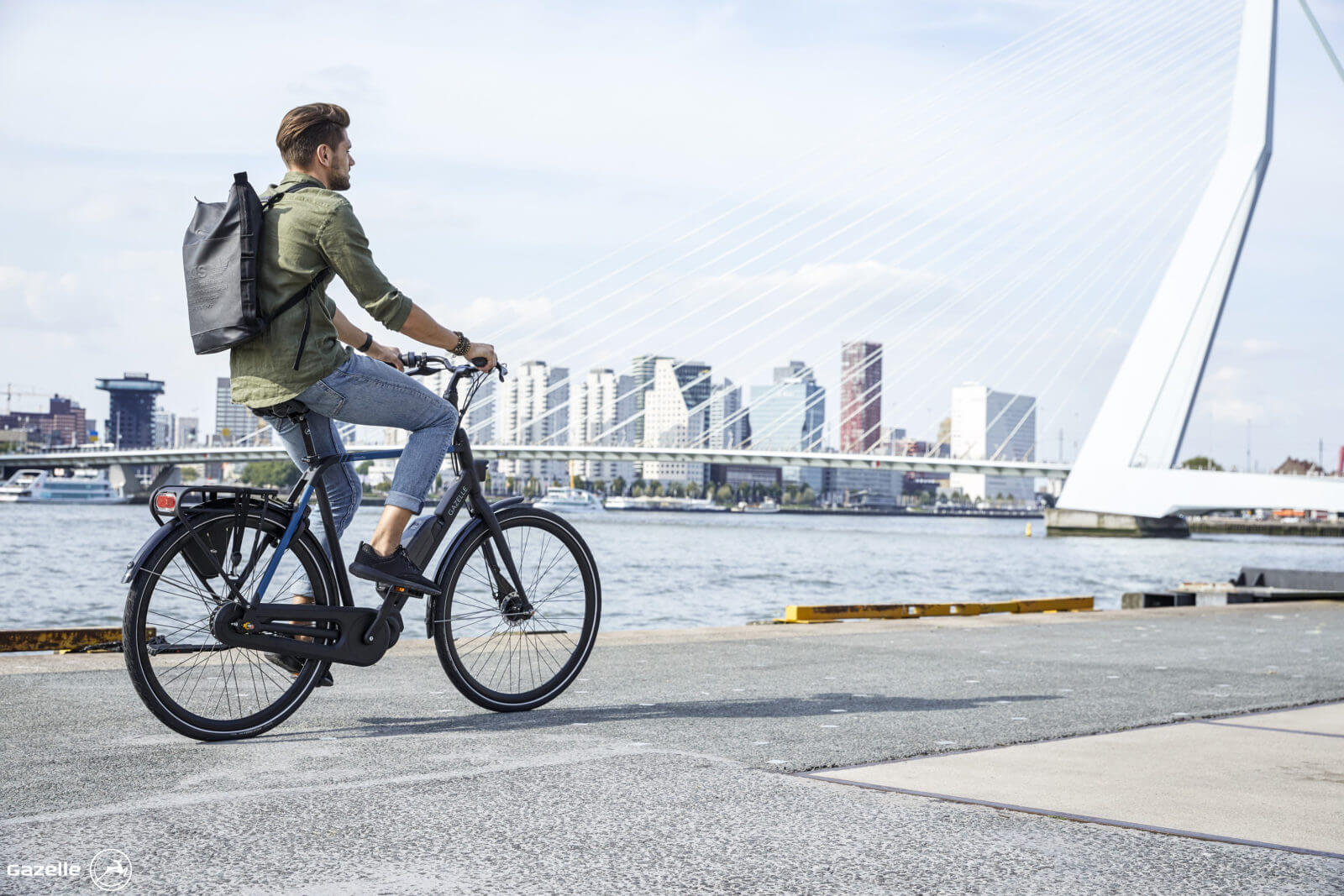Lightening The Load
What E-Strollers Can Learn From E-Bikes
The e-bike has had quite the hill to climb. First largely viewed as a gimmick, it took time for the electric bike to go mainstream and for consumers to understand how they could integrate it into their lives and justify the costs.

But today, the e-bike is growing exponentially, a massive 25-percent between 2019 and 2020 alone.
Now, as we look ahead to the (near) future of the e-stroller, our team here at MODYN has found a lot of similarities between these markets. It helps that we’ve also designed the future of both for decades alongside our clients, too. However, what’s different about the rise of the e-stroller is that it has the insightful push of the e-bike industry — an industry that has already paved its way into consumers lives as well as tried, tested and built the important battery technology we’ll grow the e-stroller sector on.
But arguably, the biggest advantage for the e-stroller is that it is arriving at a time when people are changing the way they move. More and more, people are looking for ways to move easier, faster, conveniently and even more sustainably. What’s more, people are embracing the technology that allows them to do this, and the e-bike has helped make consumers not only more comfortable with this transition, but embrace it.
So as we look ahead to what the future of the e-stroller holds — which is a lot of growth potential in a growing, $2-billion+ stroller market — there is a lot more than just technology we can borrow from the e-bike industry, but insight, too.

1. The stroller industry needs help from the outside
For decades upon decades in the bike industry, nearly any and all new innovation came from individual bike brands themselves — like new saddles and lighter frames. And with the stroller industry, the very same has been true. But when it came to the e-bike, innovations finally started coming from the Original Equipment Manufacturers and supporting industries.
For the stroller industry to adapt and integrate this new technology, they also need help. The inside investments needed to get this kind of technology up and running are huge, not only in terms of monetary value, but in knowledge and expertise. The stroller industry can’t be stuck in their own, individual models any longer if they want to embrace e-stroller technology to its fullest potential.
Going forward, the stroller industry is going to have to come together and welcome the help and advice from outside and supporting industries. This is bigger than the technology itself, like providing the right power in the right circumstance, configuring up-hill power or intuitive down-hill braking systems. It is also about creating scalable technology that can be fit and configured to all the different types of e-strollers that will inevitably hit the market.

2. The facts aren’t always enough to sell
What we learned with the e-bike early on was that the facts of it weren’t necessarily going to sell it. Yes, people knew that the e-bike could take them further, faster. But, what consumers really needed to be sold on was how the e-bike was going to integrate into their life seamlessly. What we’ve learned now is that it is harder to convince someone to give up their car for an e-bike than it is to convince a biker to upgrade to an e-bike.
The most well-known benefit of the e-stroller is its ability to lighten the load for parents. With the help of an electric motor, they can carry more and move with more agility. But even if parents know that, there are still a lot of concerns about integrating this stroller into their life. What’s charging like? How safe is it? I get along fine now, does this actually make my life easier? As this emerging market grows, we need to address parents directly and explain how the e-stroller can easily integrate into their lives not only without disruption, but with many added benefits. We also need to prove the e-stroller actually makes the stroller a better product.

3. Connected features are key
Connected features are going to be key for the e-stroller industry. While the e-bike industry has largely missed the mark, making room in the market for third parties to provide connected features that track everything from calories burned to distance and routes, the e-stroller industry should set their own standards and integrations. Think: a temperature gauge for inside a pram, route-tracking, GPS locations for if your stroller is stolen, locking your stroller’s wheels remotely and more.
These connected features help parents move more easily and confidently in our world, but also provide peace of mind. In fact, the connected features are a key component to safety of the e-stroller. Of course, designers and engineers will still need to work on safety concerns like ensuring the battery never overpowers, that the wheels don’t turn too fast, or that the stroller maintains balance with the weight of the battery in place. But, the technology of integrated features can help ensure a safer product, too, tracking battery life and safety, carefully monitoring speed, alerting when the stroller is off balance and even breaking when the stroller is going too fast.


4. We have to make sustainability a priority
The e-bike emits 23 times less carbon per year than most cars. This makes it a much more sustainable choice for commuting consumers. Similarly, e-strollers offer the same potential for sustainability. They allow parents to carry more groceries and tackle hilly roads easily, reducing the need for cars. In the bigger picture, the more freedom and ease of movement we provide parents with their e-strollers, the more we can expect them to leave their cars at home.
Integrating Sustainability into Design
E-strollers must prioritize sustainability from the start, integrating it into their design and functionality. E-strollers need to be long-lasting, ideally up to 10 years. Repair and replacement parts programs will be key, allowing strollers to be fixed easily rather than discarded. This design and material quality will ensure e-strollers don’t end up in landfills. This gives parents the ability to sell the stroller when done, extending its life and providing a return on investment.
Reselling and Leasing Models
We can imagine a future where reselling is done easily through an e-stroller brand’s portal, allowing customers to buy replacement parts or a new seat color they prefer. Another sustainability business model would be leasing, successfully done in the e-bike sector. A leasing program would allow e-strollers to be used by multiple families, making them more affordable for parents.
Recycling Programs
The industry should focus on designing e-strollers that can easily be broken down for recycling. One part of the program should involve recycling e-stroller parts at the end of their lifetime. This means using recyclable materials from the start. The second part should involve salvaging valuable materials and parts from old strollers to build new ones. Finally, battery recycling programs will keep hazardous materials out of wastelands, making e-strollers truly sustainable.
Driving Innovation at MODYN
At MODYN, we are working with partners to drive these innovations forward. By combining our knowledge of the bike, e-bike, and stroller industries, we aim to create e-strollers that are better, safer, and more sustainable. Curious about what we’re up to? Get in touch to learn more about our innovations.

